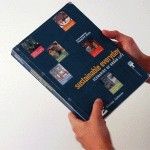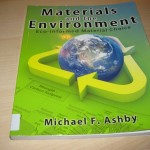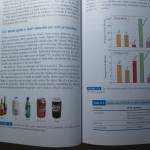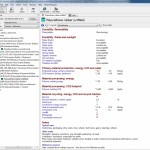Extra curricular
One of my goals was to read more literature concerning designing. In my free time, I read two books and watched a documentary that gave me inspiration as designer. These three activities were all involved in sustainable design. Furthermore, I presented and visited at the Dutch Design Week 2009.
Sustainable Everyday
The book “Sustainable Everyday”, by Ezio Manzini and François Jégou, talks about the future using the tools of design: design that does not prefigure tomorrow but takes part in shaping it. I learned that material reduction, alternative energy or intelligent technologies are not the only ways to reduce the environmental impact of designs. This book made me aware of the social aspects concerning sustainability. Some additional methods are think before doing, promote variety, use what already exists, bring people and things together, reduce demand for transport, increase participation and create networks. These methods can give me inspiration as designer to reduce the environmental impact of products or service on a social way, without affecting its quality. In addition, the key is to focus on the simplicity of the solution.
Materials and the Environment, Eco-Informed Material Choice by Micheal F. Ashby
The book “Materials and the Environment” provided me methods and tools for designing with materials within the context of their role in products and the environmental consequences. I learned the Life Cycle Assessment is a good method to get an overview of the used materials, energy, resources or emissions over the whole life cycle of a product. The Eco/Energy Audit method might be handy to visualize the relative amount of energy concerning materials, manufacture, transport, use and disposal of a product. These two methods are useful to analyze the phase of life to be targeted in order to minimize the environmental impact most effectively. However, I should be aware there is a difference between embodied energy and energy per unit volume. Furthermore, I learned while selecting suited materials for designs I should translate the design requirements (function, constraints, objective and free variables), screen using constraints, ranking using objectives and seek for documentation to select. A trade-off graph is useful to plot the selection. Finally yet important I learned how to use the CES Edupack ’09 software to find useful material profiles.
Documentary OBJECTIFIED
From the documentary “objectified” by Gary Hutswit, I learned that sustainability is undeniable for designers. Not everything has to be build for permanent use. Therefore, it is a very good method to focus on design that people fall in love with, so they will keep it longer with them. A possible example would be a toothbrush that you will keep for life. Only the top will be replaced after time. In this way, the amount of material thrown away can be reduced. This gave me inspiration to take in mind for further sustainable designs.



